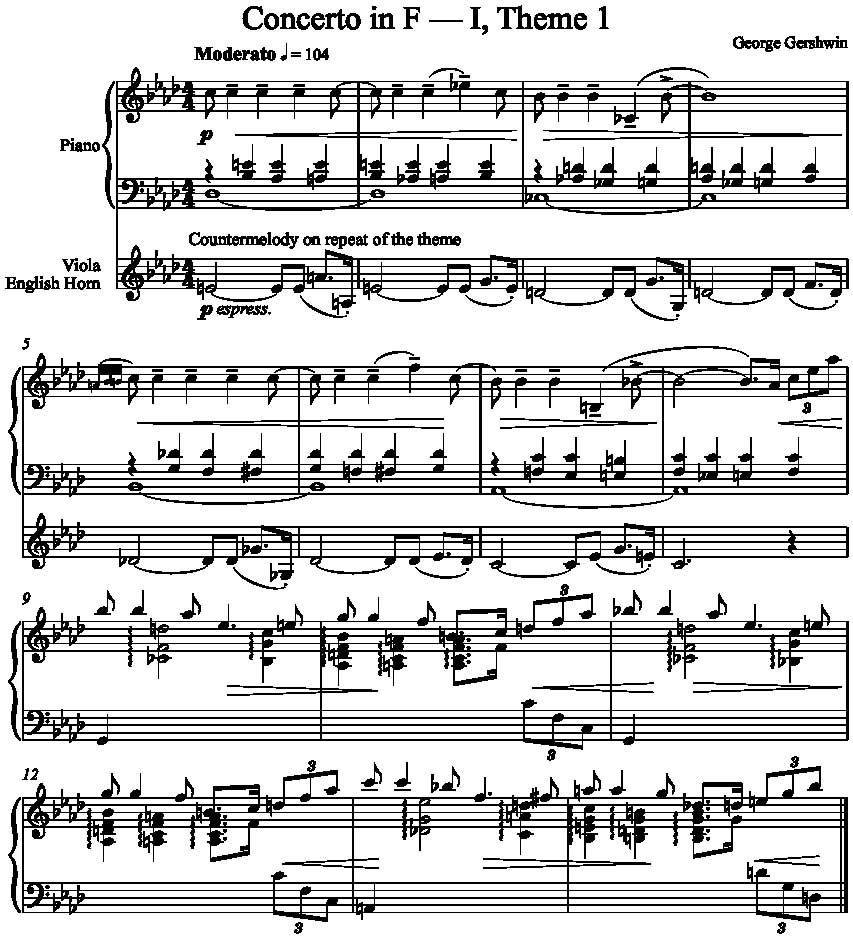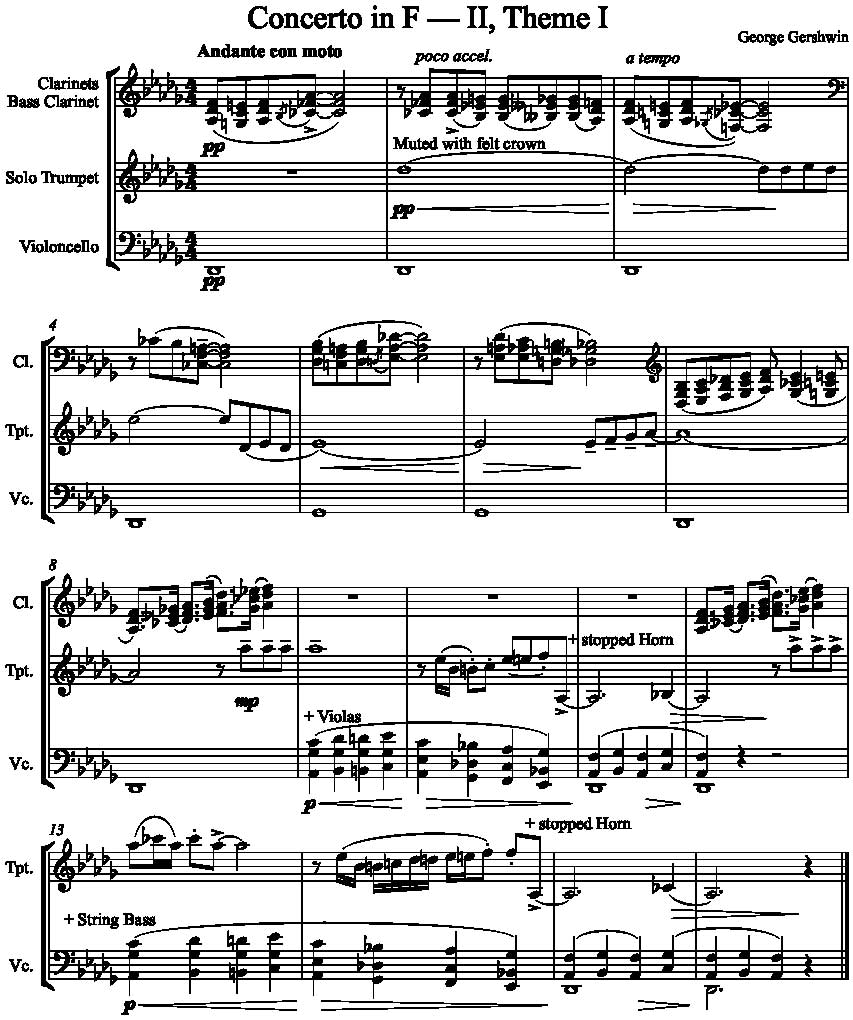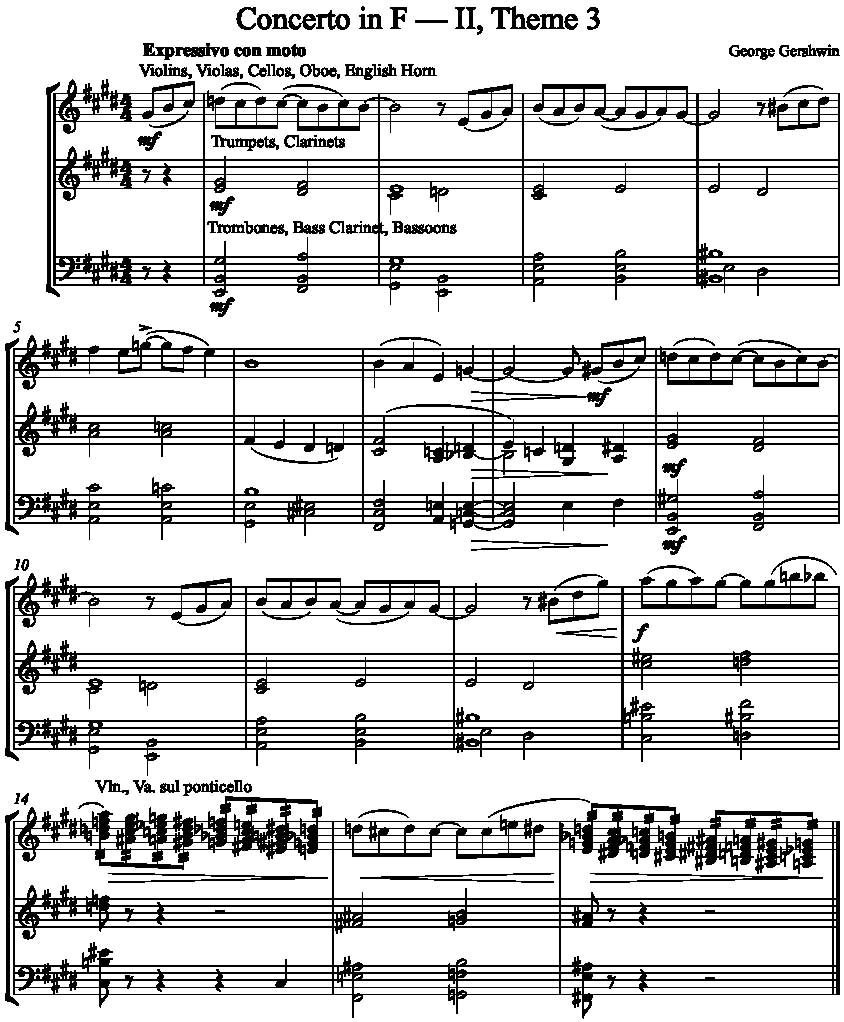
Gershwin, Piano Concerto in F
Great Piano Concertos
 |
Gershwin, Piano Concerto in F |
Great Piano Concertos |
The Piano Concerto in F was a direct result of the success of Rhapsody in Blue. It was commissioned by Walter Damrosch immediately after the 1924 premiere of Rhapsody and was first performed by Gershwin at the piano in 1925. The Concerto in F is still the most popular of the American concertos mainly due to its successful bridging of popular and jazz rhythms and melodies with the concerto format. It also shows Gershwin’s understanding of the orchestra, as he insisted on doing the orchestration himself. Each movement features a popular rhythm or genre. The first movement uses the Charleston, the second movement the Blues, and the third movement Ragtime. The traditional concerto elements include repeating themes throughout the movements, a nod to the traditional concerto form in its design, and virtuoso piano writing very much in the tradition of Lizst and Beethoven. We even get written out versions of some of Gershwin’s great piano styles. Theme 1, which continually reappears throughout the concerto, is a wistful tune in its soft passages and quite passionate when played loud, usually with all the violins, violas, and cello doubling the melody, á la Tchaikovsky. The harmonization is quite sophisticated with his use of flat nine chords, placing the ninth in the bass and the root in the pulsating syncopated melody to start out the first phrase. Gershwin loved to write countermelodies, often using the English Horn and Violas to play them. |
Listen to the excerpt of Theme I while following the score: |
 |
This theme shows us one of Gershwin’s own piano styles. First you hear it solo, and then with a countermelody. It does occur again in the third movement. Click on the play triangle to hear the score excerpt. |
|
The second movement starts with a blues tune played by trio of clarinets, a solo trumpet, and lower strings. Again Gershwin likes to use a melody/countermelody set up in his writing. Listen to the excerpt of movement 2, Theme I while following the score: |
 |
After a faster paced second theme, there is a return to the blues idea, followed by a third theme shown below. This theme is introduced by the orchestra and builds to several climaxes. This theme occurs again in the third movement. Listen to the excerpt of movement 2, Theme 3 while following the score: |
 |
The Concerto in F has everything you want in a concerto: flashy virtuoso passages, good dialogue with the orchestra, and hummable themes. Although everything is written out, it is an early example of third stream music, the mixing of jazz and classical styles. And it’s written in such a way that the strings and winds don’t weigh down the piano soloist but rather are a vibrant part of the composition. |